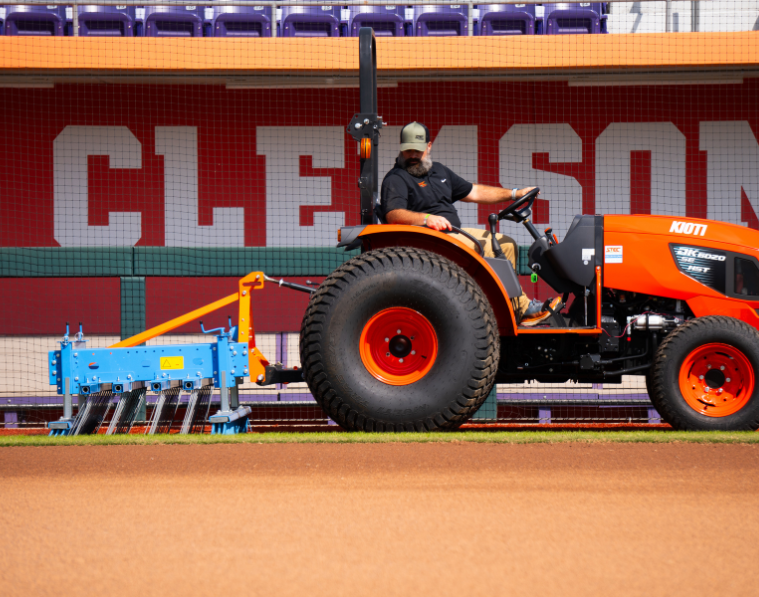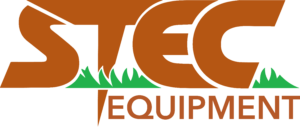Content provied by STEC
There are more than 10,000 synthetic turf fields in use across the U.S., according to industry officials, and they are in use everywhere from the NFL to parks and recreation fields. The synthetic turf industry plans to have 1,500 new installations each year and a growing number of sports turf managers are choosing synthetic turf fields for their facilities.
New-generation synthetic fields were introduced to the U.S. turf industry around 20 years ago. These fields continue to be evaluated; many sports managers, turf professionals, and administrators are weighing the pros and cons. Whatever your opinions on synthetic turf use, it is necessary to know how to properly care for them. Synthetic turf does have its benefits, no doubt, but there is important information that falls under these “pros” that isn’t always made transparent.
“Synthetic fields are maintenance-free.”
“Synthetic fields allow for immediate play.”
“Synthetic turf creates worry-free field conditions.”
If you’ve been told any of these statements and they end with a period, ask some follow-up questions. These seemingly beneficial points are not an accurate or complete picture of what synthetic turf management requires for a healthy playing field.
Let’s break down the truth about synthetic turf.
“Synthetic fields are maintenance-free.”
Yes, but no. Let’s start by considering natural turf. If you neglect to aerate, dethatch, topdress, sweep, etc. your field will look drastically different from one that is properly groomed and up kept. Nothing in life is truly free. Natural and synthetic turf are similar in this way–there IS a cost of maintenance for both. While caring for synthetic turf is relatively simple, it still has a few crucial maintenance needs.
A synthetic field installation should not be portrayed as a set-it-and-forget-it process. There are major safety risks that come with operating under this theory. Playability and athlete safety increasingly become an issue due to compaction, field damage, and the cleanliness of your surface. Indoor synthetic fields are at an increased risk for problems because they don’t receive passive cleaning from natural elements, like sunlight, rain, and snow on outdoor fields. Everything that happens on indoor surfaces stays on them…unless they are properly cleaned.
“Synthetic fields allow for immediate play, no matter the weather.”
There is also truth in this claim. However, your turf installer essentially holds the power of backing this up. The quality of your installer will reflect in the quality of your synthetic field. Improper or rushed installation can lead to severe drainage and appearance issues. Fields installed incorrectly will inevitably not be able to withstand outdoor elements and are at a variety of risks, such as being too wet because of bad drainage or in a worst-case scenario: floating. This is an area where field managers are limited in their resources to repair the fields, and will have to collaborate with the installation company to resolve the issue. If a field gets damaged, the installers will, again, have to be informed and called in for help. Typically, the new section installed onto the original field will stand out. The color and cut lines are often obvious and disrupt a field’s appearance.
In environments with hot temperatures, a black rubber infield can heat 40-70 degrees hotter than surrounding air temperatures. Synthetic fields do not have any natural cooling factors, like condensation and evaporation, to provide relief to players. Some infills have a special coating to help with this process but come at a higher cost and may be left off due to budget constraints. Heat emitted from synthetic fields begins to dissipate at six feet, however, most athletes below the high school and collegiate level fall under this height and are subjected to the full effects under the hot sun.
“Synthetic turf creates worry-free field conditions.”
Artificial turf is a strong surface. Good thing, right? A field that withstands the constant force and wear that comes from athletes’ daily use is crucial. But is it too strong in some cases? Research shows that injuries are more likely to occur on synthetic turf because the synthetic turf field does not give and play like natural grass. Artificial grass is the strongest point so when the surface comes into contact with another one, for example, a player’s wrist, ankle, or knee, it puts the weaker point at risk for injury. This factor is important to consider when developing a maintenance plan and to stay educated as more research emerges on the safety of synthetic turf.
One way to limit injury is GMAX testing–a practice that evaluates the shock absorption of synthetic turf. The higher the number, the harder the surface and, therefore, the more shock an athlete absorbs when hitting the ground. Compacted turf is a danger to both players and the health of synthetic fields, especially in this day and age where head injuries are receiving much-needed attention. GMAX testing is crucial throughout the year and that testing is generally done only once maybe twice a year at most facilities. The risk of injury can be lowered by decompacting the infill as often as necessary and meeting your field’s needs throughout the year.
The Truth: Prevention is Key for Healthy Synthetic Turf
Synthetic turf, like anything, has its pros and cons. At STEC Equipment, we’re focused on educating about some of the common misconceptions of synthetic turf within the industry. It is an investment just like a natural grass field that requires proper maintenance to live up to its full potential. Ultimately, chemical-free maintenance requires more mechanical field management.
Prevention is key for healthy synthetic turf; implementing the correct maintenance procedures to ensure that the issues discussed never happen in the first place. What does this look like? Testing the shock absorption and decompacting the field as often as it requires, depending on the level of usage. Grooming 2-3 times a week (or more) to clean the surface and keep your infill spread throughout your field. Investing in quality equipment to maintain the longevity of your synthetic fields, so that a 10-15 year investment doesn’t shrink in half.
If your facility is currently in the process or planning to install a synthetic field, do some serious research. Ask the installers involved, “What can I do to make this field the best it can be?” Compile a list of what a weekly maintenance schedule would look like. Make sure your turf installation company is reliable and can be accessed easily if an issue arises with the fields.
Most importantly, invest in quality equipment to maintain the longevity of your synthetic fields, so that your long-term investment lasts and you get all you are promised out of it. STEC Equipment has innovative, high-quality synthetic turf equipment to help you meet the needs laid out in this article, and any more you encounter.
Browse our selection of turf maintenance equipment here, which includes aerators, cleaners, infillers, brushes, and more, or contact us to learn more about our synthetic turf equipment lineup from our experts.



